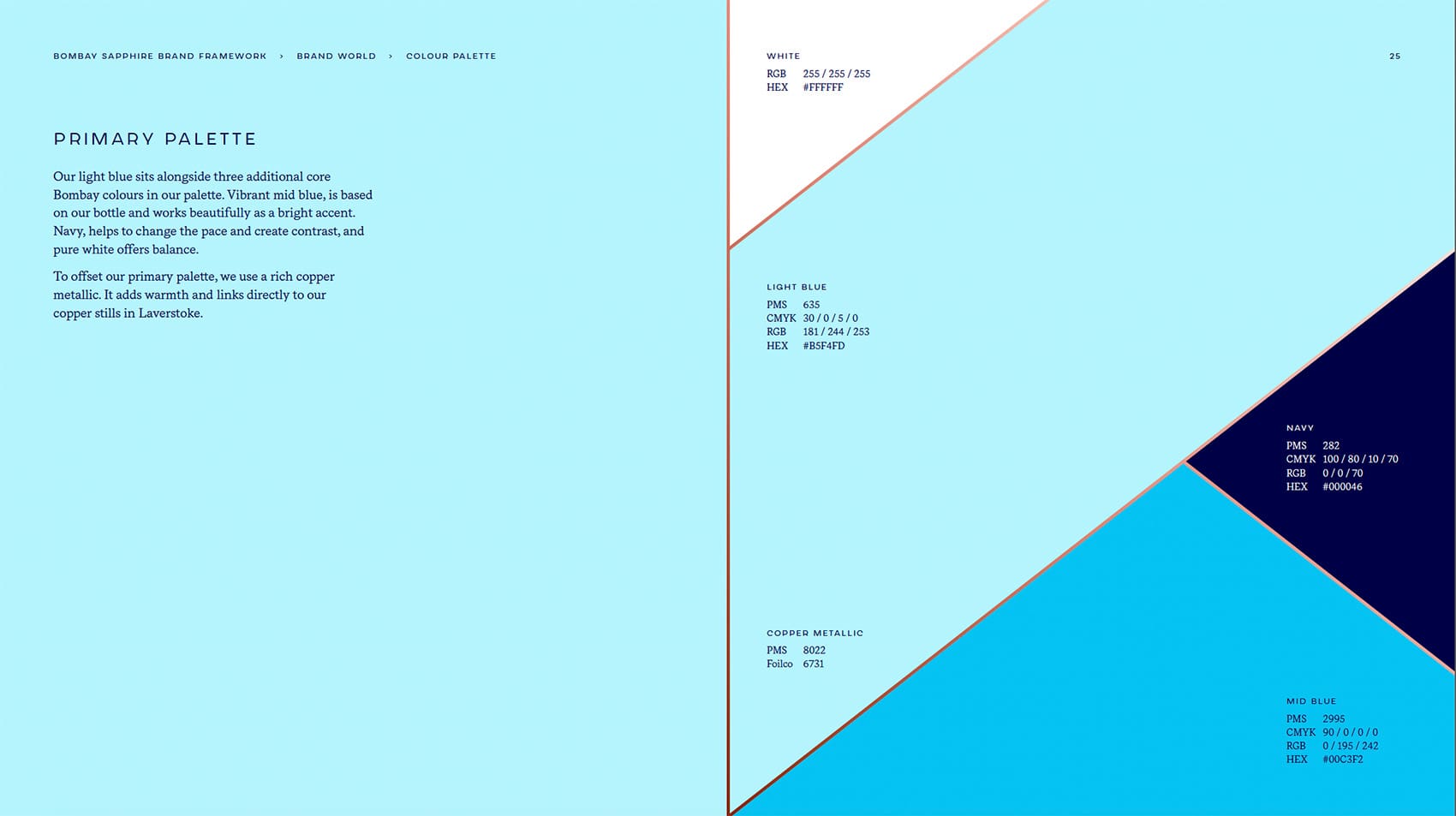What is a Brand Guide and Why is it Important?
You have probably heard about Brand Guides at one point or another. But what is it and why is it so important to brand success? Also known as a brand book, brand style guide, or brand manual, a brand guide, is a document that outlines the visual and messaging elements of a brand. It serves as a reference for anyone who works with your brand, including employees, contractors, partners and freelancers. Your brand guide ensures consistency in the way a brand is presented across all channels offline and online.
The main purpose of a brand guide is to provide a clear and concise set of guidelines for using a brand’s visual and messaging elements. This includes specifications for logos, typography, color palettes, imagery, and tone of voice. It also includes guidance on how to use these elements in various contexts, such as marketing materials, social media, and email campaigns.
Creating a brand is much more than creating a logo or coming up with a catchy slogan. It’s about crafting an entire identity and ensuring that your audience understands what your brand is all about. A brand guide is a comprehensive document that outlines your brand’s mission, values, voice, and visual identity. In this article, we will explore what a brand guide is, why it’s important, and how to create one that stands out from the crowd.
What is a Brand Guide?
A brand guide, also known as a style guide, is a document that outlines the visual and messaging components of a brand. It serves as a blueprint for maintaining consistency and coherence across all marketing materials, including logos, website design, social media posts, and advertising campaigns. A well-crafted brand guide ensures that everyone in your organization understands how to represent your brand, and it can also be shared with external partners and vendors to ensure consistency in all brand-related communications.
A brand guide typically includes the following sections:
Introduction
This section provides an overview of the brand and its mission, values, and personality.

Logo guidelines
This section outlines the proper use of the brand’s logo, including specifications for size, placement, and color variations. It will normally include some use examples so that everyone knows what they can and cannot do with a logo.

Color palette
This section provides guidelines for the use of the brand’s colors, including primary and secondary colors, as well as complementary colors. This is super helpful when you have teams creating content for multiple platforms and ensures your colours remain consistent from your website to your socials and more.

Typography
This section outlines the proper use of fonts, including guidelines for headlines, body text, and other typography elements. Fonts play a huge part in creating your brand imagery, and there’s literally millions to choose from. Defining the fonts you will use across all platforms helps keep everything cohesive.

Imagery
This section provides guidance on the types of images that should be used to represent the brand, as well as guidelines for the use of photography and illustration. It can cover things like what you should or should not show in pictures, what filters to use and more.
Below you can see part of the brand guide from Oculus. You can see they give a description, attributes the image should contain and abide by and the use cases.

Tone of voice
This section outlines the brand’s personality and tone of voice, providing guidance on how to communicate in a way that is consistent with the brand’s values and messaging.
Here you can see how Bolt break their Tone of Voice into different styles, providing direction and information on what it means and how it affects their writing.

Applications
This section provides examples of how the brand elements should be used in various applications, such as business cards, letterhead, and social media profiles.
If you want to see more examples of brand guides, here is a website where you can download and see brand guides from famous big name brands such as Coca-Cola, Mc Donalds, Starbucks and more – https://brandingstyleguides.com/
Why Your Brand Needs a Brand Guide
As a brand owner or marketer, you know how important it is to stand out in a crowded market. A brand guide is an essential tool that helps your brand stand out by providing consistency in branding across all touchpoints.
Consistency in Branding Across All Touchpoints
Consistency is key when it comes to branding. Your brand should have a consistent look, feel, and tone of voice across all touchpoints, whether it’s your website, social media, packaging, or advertising. This consistency helps build brand recognition and loyalty, which are crucial for success in today’s competitive market.
A brand guide provides clear guidelines for how your brand should be presented across all touchpoints. This includes your brand’s logo, typography, color palette, imagery, and tone of voice. By following these guidelines, you ensure that your brand is presented consistently and cohesively, no matter where it appears.
A Clear and Concise Brand Message
A brand guide also helps you communicate a clear and concise brand message. Your brand message is the essence of what your brand stands for and what it offers to customers. It should be communicated consistently across all touchpoints to create a strong brand identity.
A brand guide helps define your brand message by outlining your brand’s values, mission, and unique selling proposition (USP). By clearly defining these elements, you can ensure that your brand message is communicated effectively and consistently across all touchpoints.
Time and Cost Savings
Creating a brand guide may seem like a daunting task, but it can actually save you time and money in the long run. A brand guide streamlines the branding process by providing clear guidelines for how your brand should be presented. This means less time and money spent on revisions, and more time and money spent on other important aspects of your business.
A brand guide also helps ensure that all stakeholders are on the same page when it comes to branding. This includes designers, marketers, and other team members who may be involved in creating and promoting your brand. By providing clear guidelines, a brand guide reduces the risk of miscommunication and misunderstandings, which can be costly in terms of time and money.
Protecting the Brand’s Integrity
A brand guide also helps protect your brand’s integrity. Your brand is one of your most valuable assets, and it’s important to protect it from misuse or misrepresentation. A brand guide ensures that your brand is presented consistently and accurately, which helps build trust and credibility with your target audience.
A brand guide also helps prevent unauthorized use of your brand’s assets. By providing clear guidelines for how your brand should be presented, you can reduce the risk of others misusing your logo, imagery, or other brand assets.
Steps to Create a Brand Guide
Creating a brand guide is a crucial aspect of building a strong and recognizable brand. A brand guide serves as a reference for employees, stakeholders, and third-party vendors who interact with your brand. It outlines the principles, values, and standards that govern how your brand should be represented across all touchpoints.
Conducting Brand Research and Analysis
Before creating a brand guide, it’s essential to conduct thorough research and analysis. This involves understanding your target audience, competitors, and the market landscape.
Start by defining your target audience – who are they, what are their pain points, and how can your brand help solve their problems? Understanding your audience will help you develop a unique value proposition that resonates with them.
Next, research your competitors – what are their strengths and weaknesses? How can you differentiate your brand from theirs? Conducting a SWOT analysis (Strengths, Weaknesses, Opportunities, and Threats) can help you identify areas where you can stand out.
Finally, analyze the market landscape – what are the industry trends, and how can you position your brand to take advantage of them? This will help you identify opportunities and potential challenges that may impact your brand’s growth.
Defining Brand Values, Personality, and Voice
Once you’ve conducted research and analysis, the next step is to define your brand values, personality, and voice. These elements form the foundation of your brand and help guide all future brand decisions. This is one of the most important steps that will ultimately determine how everything else works together. We have put together 33 questions you should be asking yourself when building your brand and made it available for you to download. This resource is designed to help you establish a strong brand identity, develop brand messaging, and create a brand strategy that will set you apart from the competition. Whether you’re just starting out or looking to refine your existing brand, these questions will provide you with a solid foundation for building a successful brand.
Brand values are the core beliefs and principles that your brand stands for. They guide your brand’s behavior, interactions with stakeholders, and overall mission. Examples of brand values include honesty, authenticity, and innovation.
Brand personality refers to the human traits and characteristics that your brand embodies. It’s the emotional connection that your brand creates with your audience. Examples of brand personalities include friendly, confident, and adventurous.
Brand voice is the tone and language that your brand uses to communicate with your audience. It’s how your brand expresses its personality and values in written and verbal communication. Examples of brand voices include authoritative, conversational, and playful.
Developing a Brand Visual Identity
A brand’s visual identity is one of the most recognizable aspects of a brand. It includes elements like the logo, color palette, typography, and imagery.
The logo is the centerpiece of your visual identity. It should be memorable, simple, and reflective of your brand’s personality and values. When designing a logo, it’s essential to consider how it will look across different mediums, like social media, print, and digital.
The color palette is another critical aspect of your visual identity. It should reflect your brand’s personality and evoke emotions that resonate with your target audience. When choosing colors, it’s essential to consider color psychology and how different colors can impact emotions and perceptions.
Typography refers to the fonts and typefaces used in your brand’s visual identity. It should be easy to read and reflect your brand’s personality and values. When selecting typography, it’s essential to consider legibility, consistency, and versatility across different mediums.
Creating Brand Messaging and Tone of Voice Guidelines
Once you’ve developed your brand visual identity, the next step is to create brand messaging and tone of voice guidelines. These elements ensure that all brand communication is consistent, on-brand, and aligned with your brand values and personality.
Brand messaging includes the key messages that your brand wants to communicate to its audience. It should be concise, memorable
You should consider
Tone
What is the overall tone of your brand’s communication? Is it formal or informal? Serious or playful?
Style
What is the style of your brand’s communication? Is it straightforward or creative? Positive or sarcastic?
Vocabulary
What kind of words and phrases does your brand use? Are they technical or simple? Jargon-heavy or easy to understand?
Messaging
What kind of messages does your brand want to communicate? What are your key values and messages you want your audience to take away from your brand?
Overall, a brand guide is an essential tool for ensuring consistency and clarity in a brand’s messaging and visual identity. It helps maintain a cohesive brand image and makes it easier for stakeholders to work with the brand. Got any questions? Let us know in the comments






0 Comments